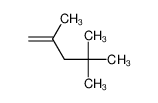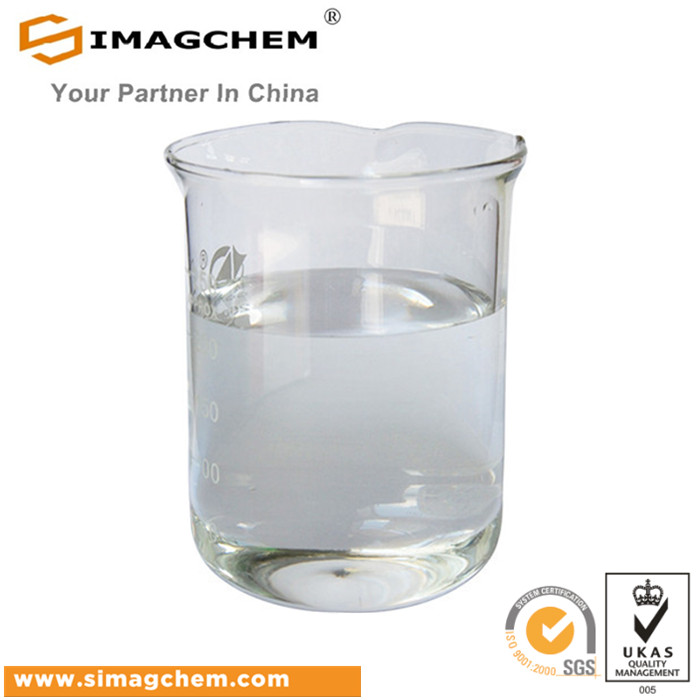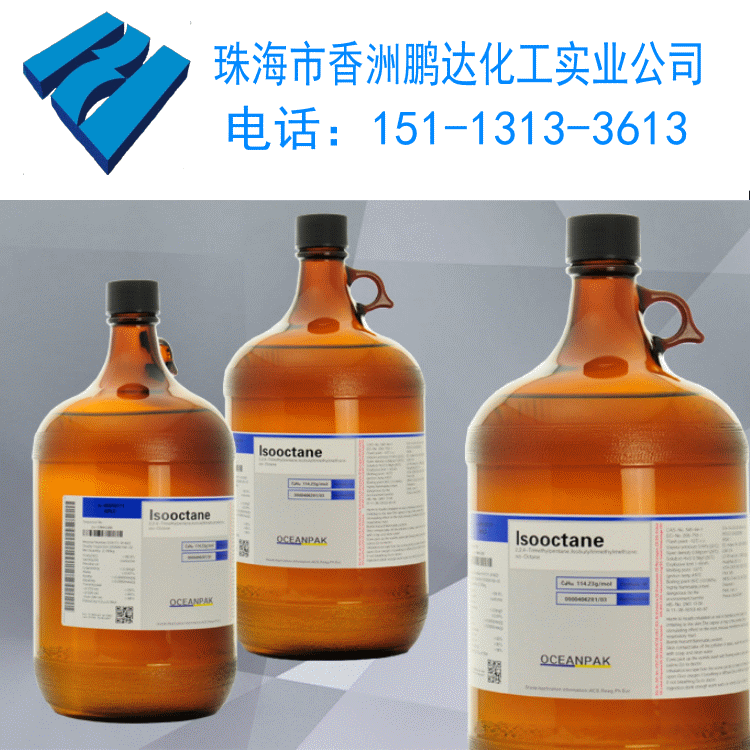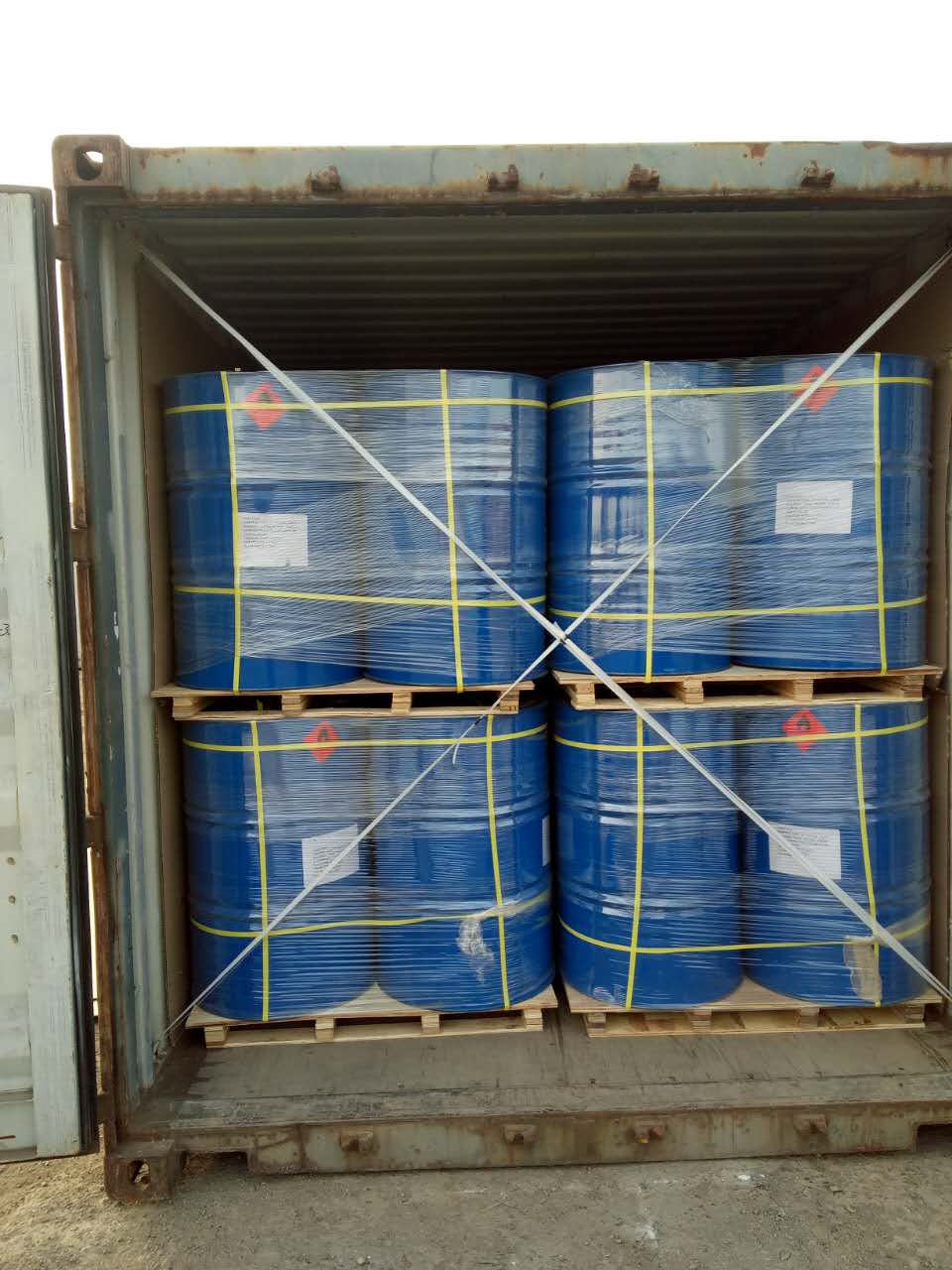1.Identification
1.1 GHS Product identifier
| Product name | isooctane |
|---|
1.2 Other means of identification
| Product number | - |
|---|---|
| Other names | 2,4,4-Trimethylpentane |
1.3 Recommended use of the chemical and restrictions on use
| Identified uses | For industry use only. 2,2,4-Trimethylpentane is used in determining octane numbers of fuels, in spectrophotometric analysis, as a solvent and thinner, and in organic syntheses. |
|---|---|
| Uses advised against | no data available |
1.4 Supplier's details
| Company | MOLBASE (Shanghai) Biotechnology Co., Ltd. |
|---|---|
| Address | Floor 4 & 5, Building 12, No. 1001 North Qinzhou Road, Xuhui District, Shanghai, China |
| Telephone | +86(21)64956998 |
| Fax | +86(21)54365166 |
1.5 Emergency phone number
| Emergency phone number | +86-400-6021-666 |
|---|---|
| Service hours | Monday to Friday, 9am-5pm (Standard time zone: UTC/GMT +8 hours). |
2.Hazard identification
2.1 Classification of the substance or mixture
Flammable liquids, Category 2
Skin irritation, Category 2
Aspiration hazard, Category 1
Specific target organ toxicity – single exposure, Category 3
Hazardous to the aquatic environment, short-term (Acute) - Category Acute 1
Hazardous to the aquatic environment, long-term (Chronic) - Category Chronic 1
2.2 GHS label elements, including precautionary statements
| Pictogram(s) |     |
|---|---|
| Signal word | Danger |
| Hazard statement(s) | H225 Highly flammable liquid and vapour H315 Causes skin irritation H304 May be fatal if swallowed and enters airways H336 May cause drowsiness or dizziness H410 Very toxic to aquatic life with long lasting effects |
| Precautionary statement(s) | |
| Prevention | P210 Keep away from heat, hot surfaces, sparks, open flames and other ignition sources. No smoking. P233 Keep container tightly closed. P240 Ground and bond container and receiving equipment. P241 Use explosion-proof [electrical/ventilating/lighting/...] equipment. P242 Use non-sparking tools. P243 Take action to prevent static discharges. P280 Wear protective gloves/protective clothing/eye protection/face protection. P264 Wash ... thoroughly after handling. P261 Avoid breathing dust/fume/gas/mist/vapours/spray. P271 Use only outdoors or in a well-ventilated area. P273 Avoid release to the environment. |
| Response | P303+P361+P353 IF ON SKIN (or hair): Take off immediately all contaminated clothing. Rinse skin with water [or shower]. P370+P378 In case of fire: Use ... to extinguish. P302+P352 IF ON SKIN: Wash with plenty of water/... P321 Specific treatment (see ... on this label). P332+P313 If skin irritation occurs: Get medical advice/attention. P362+P364 Take off contaminated clothing and wash it before reuse. P301+P310 IF SWALLOWED: Immediately call a POISON CENTER/doctor/… P331 Do NOT induce vomiting. P304+P340 IF INHALED: Remove person to fresh air and keep comfortable for breathing. P312 Call a POISON CENTER/doctor/…if you feel unwell. P391 Collect spillage. |
| Storage | P403+P235 Store in a well-ventilated place. Keep cool. P405 Store locked up. P403+P233 Store in a well-ventilated place. Keep container tightly closed. |
| Disposal | P501 Dispose of contents/container to ... |
2.3 Other hazards which do not result in classification
none
3.Composition/information on ingredients
3.1 Substances
| Chemical name | Common names and synonyms | CAS number | EC number | Concentration |
|---|---|---|---|---|
| isooctane | isooctane | 540-84-1 | none | 100% |
4.First-aid measures
4.1 Description of necessary first-aid measures
General advice
Consult a physician. Show this safety data sheet to the doctor in attendance.
If inhaled
Fresh air, rest. Artificial respiration may be needed. Refer for medical attention.
In case of skin contact
Remove contaminated clothes. Rinse and then wash skin with water and soap.
In case of eye contact
First rinse with plenty of water for several minutes (remove contact lenses if easily possible), then refer for medical attention.
If swallowed
Rinse mouth. Do NOT induce vomiting. Refer for medical attention .
4.2 Most important symptoms/effects, acute and delayed
Excerpt from ERG Guide 128 [Flammable Liquids (Water-Immiscible)]: Inhalation or contact with material may irritate or burn skin and eyes. Fire may produce irritating, corrosive and/or toxic gases. Vapors may cause dizziness or suffocation. Runoff from fire control or dilution water may cause pollution. (ERG, 2016)
4.3 Indication of immediate medical attention and special treatment needed, if necessary
Absorption, Distribution and Excretion
Respiration is the most likely route by which 2,2,4-trimethylpentane is absorbed. Although it has not been determined, the respiratory uptake of 2,2,4-trimethylpentane is probably similar to that seen for n-octane. Oral absorption of (14)C-2,2,4-trimethylpentane has been reported ... to occur to the extent of 86% in male rats based on recovery of radioactivity in urine, expired organics, and expired (14)C-carbon dioxide. Dermal bioavailability has not been reported, but absorption of 2,2,4-trimethylpentane through the skin would be expected to be minor based on percutaneous results reported for n-heptane and n-octane. Oral gavage studies ... in male rats with (14)C-2,2,4-trimethylpentane (0.5 mg/kg, single dose) revealed that the radioactivity is selectively distributed in the kidneys 72 hr after administration. It has been suggested that the renal retention of 2,2,4-trimethylpentane is related to the hydrocarbon-induced nephropathy observed specifically in male rats.
5.Fire-fighting measures
5.1 Extinguishing media
Suitable extinguishing media
Excerpt from ERG Guide 128 [Flammable Liquids (Water-Immiscible)]: CAUTION: All these products have a very low flash point: Use of water spray when fighting fire may be inefficient. CAUTION: For mixtures containing alcohol or polar solvent, alcohol-resistant foam may be more effective. SMALL FIRE: Dry chemical, CO2, water spray or regular foam. LARGE FIRE: Water spray, fog or regular foam. Do not use straight streams. Move containers from fire area if you can do it without risk. FIRE INVOLVING TANKS OR CAR/TRAILER LOADS: Fight fire from maximum distance or use unmanned hose holders or monitor nozzles. Cool containers with flooding quantities of water until well after fire is out. Withdraw immediately in case of rising sound from venting safety devices or discoloration of tank. ALWAYS stay away from tanks engulfed in fire. For massive fire, use unmanned hose holders or monitor nozzles; if this is impossible, withdraw from area and let fire burn. (ERG, 2016)
5.2 Specific hazards arising from the chemical
Excerpt from ERG Guide 128 [Flammable Liquids (Water-Immiscible)]: HIGHLY FLAMMABLE: Will be easily ignited by heat, sparks or flames. Vapors may form explosive mixtures with air. Vapors may travel to source of ignition and flash back. Most vapors are heavier than air. They will spread along ground and collect in low or confined areas (sewers, basements, tanks). Vapor explosion hazard indoors, outdoors or in sewers. Those substances designated with a (P) may polymerize explosively when heated or involved in a fire. Runoff to sewer may create fire or explosion hazard. Containers may explode when heated. Many liquids are lighter than water. Substance may be transported hot. For hybrid vehicles, ERG Guide 147 (lithium ion batteries) or ERG Guide 138 (sodium batteries) should also be consulted. If molten aluminum is involved, refer to ERG Guide 169. (ERG, 2016)
5.3 Special protective actions for fire-fighters
Wear self-contained breathing apparatus for firefighting if necessary.
6.Accidental release measures
6.1 Personal precautions, protective equipment and emergency procedures
Use personal protective equipment. Avoid dust formation. Avoid breathing vapours, mist or gas. Ensure adequate ventilation. Evacuate personnel to safe areas. Avoid breathing dust. For personal protection see section 8.
6.2 Environmental precautions
Evacuate danger area! Personal protection: self-contained breathing apparatus. Remove all ignition sources. Collect leaking and spilled liquid in sealable containers as far as possible. Absorb remaining liquid in sand or inert absorbent. Then store and dispose of according to local regulations.
6.3 Methods and materials for containment and cleaning up
Pick up and arrange disposal. Sweep up and shovel. Keep in suitable, closed containers for disposal.
7.Handling and storage
7.1 Precautions for safe handling
Avoid contact with skin and eyes. Avoid formation of dust and aerosols. Avoid exposure - obtain special instructions before use.Provide appropriate exhaust ventilation at places where dust is formed. For precautions see section 2.2.
7.2 Conditions for safe storage, including any incompatibilities
Fireproof. Separated from strong oxidants. Cool. Keep in a well-ventilated room.
8.Exposure controls/personal protection
8.1 Control parameters
Occupational Exposure limit values
no data available
Biological limit values
no data available
8.2 Appropriate engineering controls
Handle in accordance with good industrial hygiene and safety practice. Wash hands before breaks and at the end of workday.
8.3 Individual protection measures, such as personal protective equipment (PPE)
Eye/face protection
Safety glasses with side-shields conforming to EN166. Use equipment for eye protection tested and approved under appropriate government standards such as NIOSH (US) or EN 166(EU).
Skin protection
Wear impervious clothing. The type of protective equipment must be selected according to the concentration and amount of the dangerous substance at the specific workplace. Handle with gloves. Gloves must be inspected prior to use. Use proper glove removal technique(without touching glove's outer surface) to avoid skin contact with this product. Dispose of contaminated gloves after use in accordance with applicable laws and good laboratory practices. Wash and dry hands. The selected protective gloves have to satisfy the specifications of EU Directive 89/686/EEC and the standard EN 374 derived from it.
Respiratory protection
Wear dust mask when handling large quantities.
Thermal hazards
no data available
9.Physical and chemical properties
| Physical state | colourless liquid |
|---|---|
| Colour | MOBILE LIQUID |
| Odour | ODOR OF GASOLINE |
| Melting point/ freezing point | 275°C(dec.)(lit.) |
| Boiling point or initial boiling point and boiling range | 98-99°C(lit.) |
| Flammability | Highly flammable. |
| Lower and upper explosion limit / flammability limit | LOWER FLAMMABLE LIMIT: 1.1% BY VOLUME, UPPER FLAMMABLE LIMIT: 6.0% BY VOLUME |
| Flash point | -12°C |
| Auto-ignition temperature | 396.11°C |
| Decomposition temperature | no data available |
| pH | no data available |
| Kinematic viscosity | LESS THAN 32 SAYBOLT UNIVERSAL SECONDS |
| Solubility | In water:INSOLUBLE |
| Partition coefficient n-octanol/water (log value) | no data available |
| Vapour pressure | 41 mm Hg ( 21 °C) |
| Density and/or relative density | 0.692g/mLat 25°C(lit.) |
| Relative vapour density | 3.9 (vs air) |
| Particle characteristics | no data available |
10.Stability and reactivity
10.1 Reactivity
no data available
10.2 Chemical stability
Stable under recommended storage conditions.
10.3 Possibility of hazardous reactions
Flammable, dangerous fire riskThe vapour is heavier than air and may travel along the ground; distant ignition possible. As a result of flow, agitation, etc., electrostatic charges can be generated.Saturated aliphatic hydrocarbons, such as ISOOCTANE, may be incompatible with strong oxidizing agents like nitric acid. Charring of the hydrocarbon may occur followed by ignition of unreacted hydrocarbon and other nearby combustibles. In other settings, aliphatic saturated hydrocarbons are mostly unreactive. They are not affected by aqueous solutions of acids, alkalis, most oxidizing agents, and most reducing agents.
10.4 Conditions to avoid
no data available
10.5 Incompatible materials
no data available
10.6 Hazardous decomposition products
no data available
11.Toxicological information
Acute toxicity
- Oral: no data available
- Inhalation: no data available
- Dermal: no data available
Skin corrosion/irritation
no data available
Serious eye damage/irritation
no data available
Respiratory or skin sensitization
no data available
Germ cell mutagenicity
no data available
Carcinogenicity
no data available
Reproductive toxicity
No information is available on the reproductive or developmental effects of 2,2,4-trimethylpentane in humans or animals.
STOT-single exposure
no data available
STOT-repeated exposure
no data available
Aspiration hazard
no data available
12.Ecological information
12.1 Toxicity
- Toxicity to fish: no data available
- Toxicity to daphnia and other aquatic invertebrates: no data available
- Toxicity to algae: no data available
- Toxicity to microorganisms: no data available
12.2 Persistence and degradability
BRANCHED OCTANES ... 2,2,4-TRIMETHYLPENTANE ... USED AS THE SOLE CARBON SOURCES BY A VARIETY OF MICROORGANISMS, SUCH AS PSEUDOMONAS FLUORESCENS, CORYNEBACTERIUM, & P. OLEOVORANS.
12.3 Bioaccumulative potential
Based upon a water solubility of 2.44 mg/L at 25°C(1), the log bioconcentration factor for iso-octane has been estimated to be 2.57 from a regression equation(2). This value indicates bioconcentration may be important in aquatic organism(SRC).
12.4 Mobility in soil
The adsorption of several hydrocarbons including iso-octane in five types of soil was studied by measuring the retention volumes(1). Hydrocarbon retention by dry soils increased with molecular weight and unsaturation and decreased with branching. The retention volume of iso-octane was found to be high, but the authors did not provide any Koc values. The log Koc for iso-octane in soil has been estimated to be 3.43 from the water solubility of the compound(4) and a regression equation(2). The average log Koc for this compound in sediments from a salt marsh, a pond and a river was 4.35. Therefore, iso-octane is expected to generally remain strongly adsorbed to soil and sediments(5,SRC).
12.5 Other adverse effects
no data available
13.Disposal considerations
13.1 Disposal methods
Product
The material can be disposed of by removal to a licensed chemical destruction plant or by controlled incineration with flue gas scrubbing. Do not contaminate water, foodstuffs, feed or seed by storage or disposal. Do not discharge to sewer systems.
Contaminated packaging
Containers can be triply rinsed (or equivalent) and offered for recycling or reconditioning. Alternatively, the packaging can be punctured to make it unusable for other purposes and then be disposed of in a sanitary landfill. Controlled incineration with flue gas scrubbing is possible for combustible packaging materials.
14.Transport information
14.1 UN Number
| ADR/RID: UN1262 | IMDG: UN1262 | IATA: UN1262 |
14.2 UN Proper Shipping Name
| ADR/RID: OCTANES |
| IMDG: OCTANES |
| IATA: OCTANES |
14.3 Transport hazard class(es)
| ADR/RID: 3 | IMDG: 3 | IATA: 3 |
14.4 Packing group, if applicable
| ADR/RID: II | IMDG: II | IATA: II |
14.5 Environmental hazards
| ADR/RID: yes | IMDG: yes | IATA: yes |
14.6 Special precautions for user
no data available
14.7 Transport in bulk according to Annex II of MARPOL 73/78 and the IBC Code
no data available
15.Regulatory information
15.1 Safety, health and environmental regulations specific for the product in question
| Chemical name | Common names and synonyms | CAS number | EC number |
|---|---|---|---|
| isooctane | isooctane | 540-84-1 | none |
| European Inventory of Existing Commercial Chemical Substances (EINECS) | Listed. | ||
| EC Inventory | Listed. | ||
| United States Toxic Substances Control Act (TSCA) Inventory | Listed. | ||
| China Catalog of Hazardous chemicals 2015 | Listed. | ||
| New Zealand Inventory of Chemicals (NZIoC) | Listed. | ||
| Philippines Inventory of Chemicals and Chemical Substances (PICCS) | Listed. | ||
| Vietnam National Chemical Inventory | Listed. | ||
| Chinese Chemical Inventory of Existing Chemical Substances (China IECSC) | Listed. | ||
16.Other information
Information on revision
| Creation Date | Aug 12, 2017 |
|---|---|
| Revision Date | Aug 12, 2017 |
Abbreviations and acronyms
- CAS: Chemical Abstracts Service
- ADR: European Agreement concerning the International Carriage of Dangerous Goods by Road
- RID: Regulation concerning the International Carriage of Dangerous Goods by Rail
- IMDG: International Maritime Dangerous Goods
- IATA: International Air Transportation Association
- TWA: Time Weighted Average
- STEL: Short term exposure limit
- LC50: Lethal Concentration 50%
- LD50: Lethal Dose 50%
- EC50: Effective Concentration 50%
References
- IPCS - The International Chemical Safety Cards (ICSC), website: http://www.ilo.org/dyn/icsc/showcard.home
- HSDB - Hazardous Substances Data Bank, website: https://toxnet.nlm.nih.gov/newtoxnet/hsdb.htm
- IARC - International Agency for Research on Cancer, website: http://www.iarc.fr/
- eChemPortal - The Global Portal to Information on Chemical Substances by OECD, website: http://www.echemportal.org/echemportal/index?pageID=0&request_locale=en
- CAMEO Chemicals, website: http://cameochemicals.noaa.gov/search/simple
- ChemIDplus, website: http://chem.sis.nlm.nih.gov/chemidplus/chemidlite.jsp
- ERG - Emergency Response Guidebook by U.S. Department of Transportation, website: http://www.phmsa.dot.gov/hazmat/library/erg
- Germany GESTIS-database on hazard substance, website: http://www.dguv.de/ifa/gestis/gestis-stoffdatenbank/index-2.jsp
- ECHA - European Chemicals Agency, website: https://echa.europa.eu/




















-
-

-
-
-

-
-
-

-
-
-

-
-
-

-
-
-

-
-
-

-
-
-

-
-
-

-
-
-

-
More Suppliers>>Hangzhou J&H Chemical Co., Ltd.
CHINA
Purity: 98%
Lead Time: 2 Day(s)
Price: -
Xiamen Zhixin Chemical Co., Ltd.
CHINA
Purity: 99%
Lead Time: 3 Day(s)
Price: -
Skyrun Industrial Co., Limited
CHINA
Purity: 99%
Lead Time: 7 Day(s)
Price: -
Hangzhou DayangChem Co., Ltd
CHINA
Purity: 98%
Lead Time: 7 Day(s)
Price: -
Hangzhou Bingochem Co., Ltd.
CHINA
Purity: 98%
Lead Time: 7 Day(s)
Price: -
Zhuhai Xiangzhou Pengda Chemical Industry Co., Ltd.
CHINA
Purity: 99.9%
Lead Time: 2 Day(s)
Price: Min $60 /l
CHINA
Purity: above 95%
Lead Time: 10 Day(s)
Price: Min $2000 /吨
CHINA
Purity: 99%
Lead Time: 3 Day(s)
Price: Min $100 /桶
Chengdu Changzheng Glass Co.,Ltd.
CHINA
Purity: 96%
Lead Time: 12 Day(s)
Price: -
Shanghai Yusi Chemical Co., Ltd.
CHINA
Purity: >99.5%
Lead Time: 10 Day(s)
Price: Min $169.67 /l